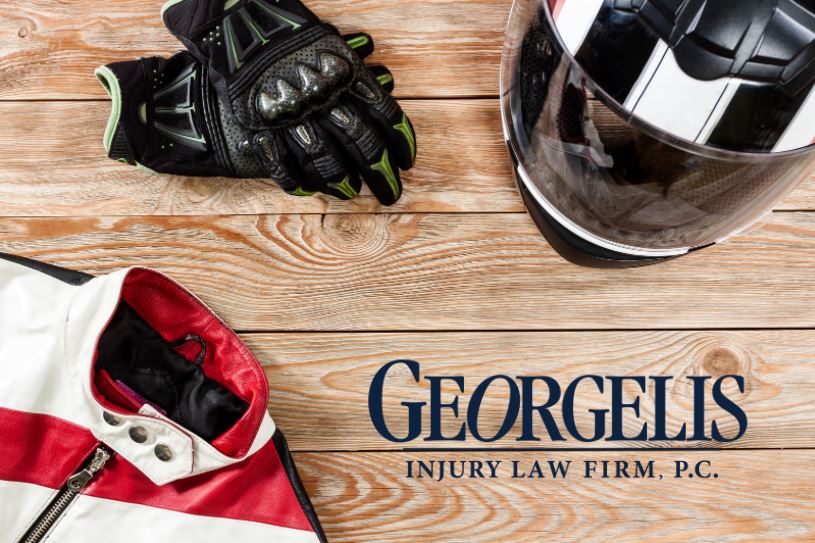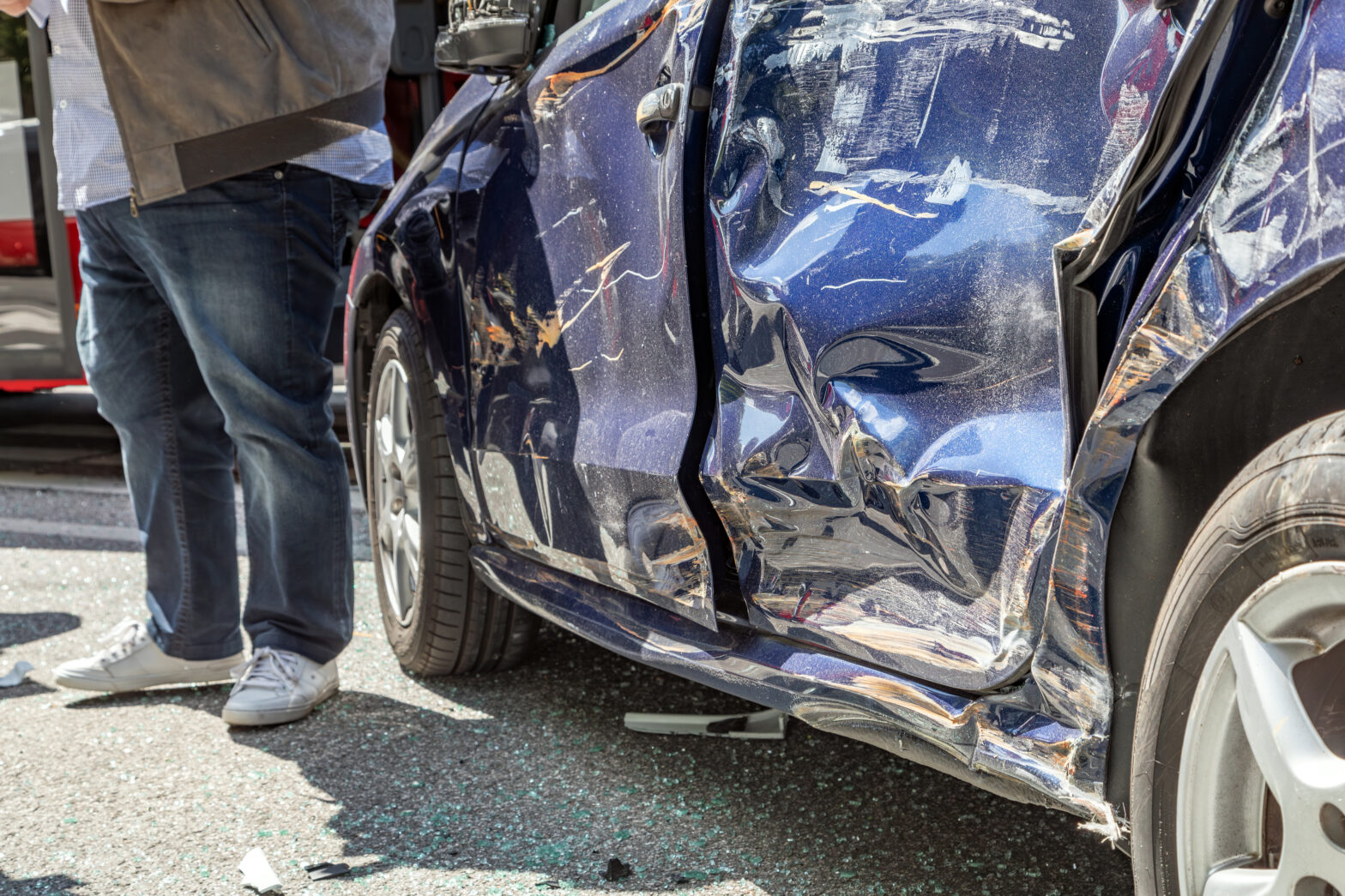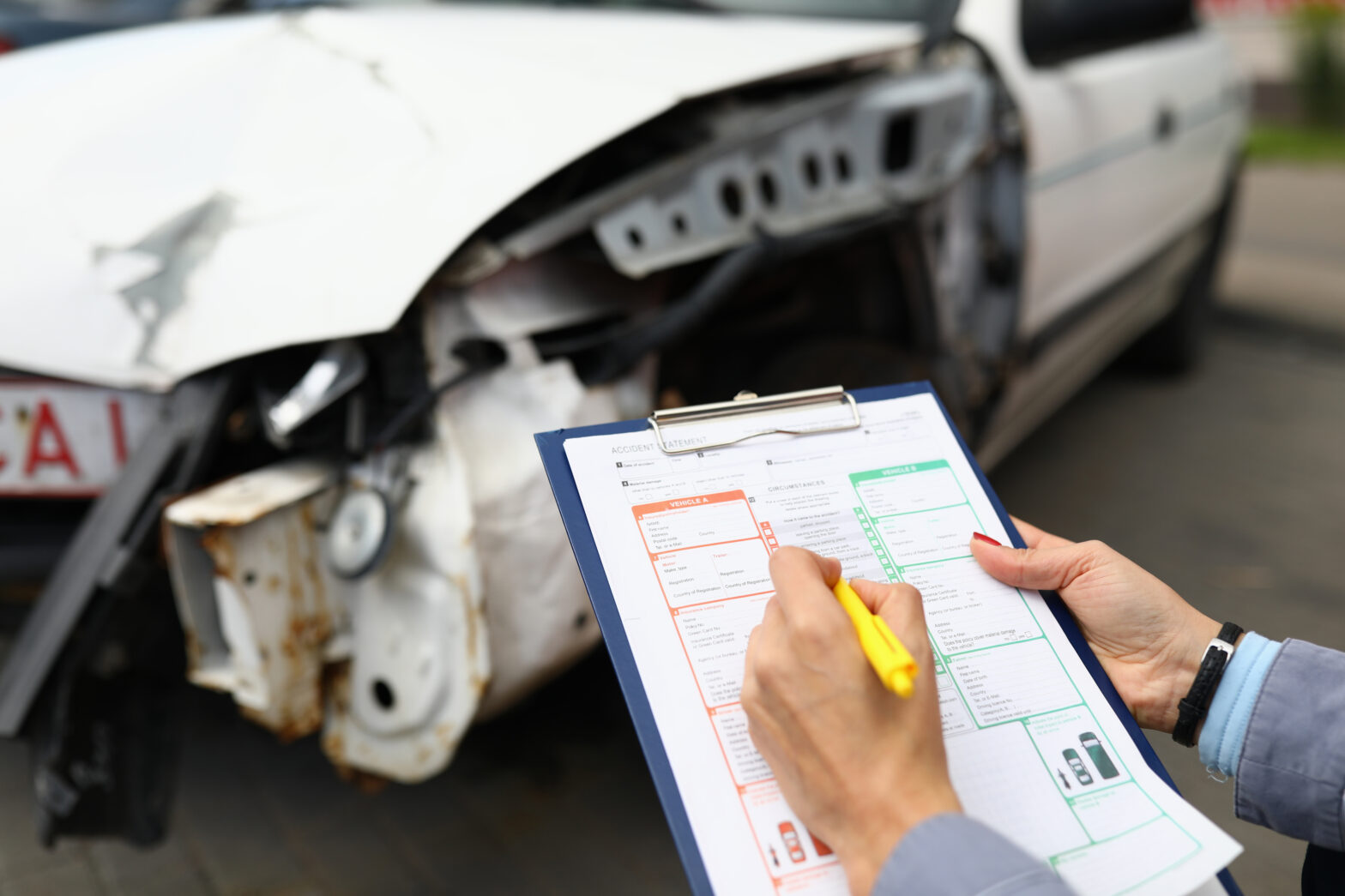Motorcycle Safety Gear: A Guide on How and What to Choose

If you ride a motorcycle, you know there’s nothing quite like the feeling of hitting the open road. The sense of freedom and challenge of riding can be invigorating, but it can easily and quickly be taken away in an accident. Let’s face it – riding a motorcycle can be risky, even for seasoned riders.
The good news is there are several motorcycle safety gear essentials that riders can wear to help reduce serious injuries in an accident. Motorcycle safety gear is one of the best and easiest ways for a rider to stay safe on the road. Before we dive into what safety gear to choose, let’s first take a look at the most common motorcycle accident injuries and injury and fatality statistics.
Common Motorcycle Accident Injuries
According to the National Highway Traffic Safety Administration (NHTSA), riders involved in a motorcycle accident are more likely to sustain injuries than drivers and passengers in a passenger vehicle or commercial truck. This should come as no surprise, considering motorcyclists are more exposed and vulnerable in a collision.
Research from the NHTSA reveals the most common injury after a motorcycle accident is a trauma to the lower extremities. This includes broken bones or fractures in the legs, feet, ankles, or knees as well as other injuries such as lacerations, dislocations, bruises, and in severe cases, amputations.
Other common motorcycle accident injuries include:
- Traumatic Brain Injuries (TBI): A traumatic brain injury happens when your head is jostled or hit with force. For motorcyclists, this is a dangerous risk, especially if the rider isn’t wearing a helmet. TBIs, even minor, can result in life-long consequences.
- Neck and Spinal Cord Injuries: During a crash, it’s not uncommon for a motorcycle rider to suffer from a neck or spinal cord injury. Some injuries can be minor and accompanied with manageable pain, and others can be debilitating with paralysis.
- Internal Injuries: Internal injuries after a motorcycle accident may be ignored or hard to diagnose without a visit to the emergency room. Internal injuries, if left untreated, can be life-threatening due to a loss of blood or organ failure.
- Road Rash: Road rash is a skin injury caused by abrasion with road surfaces. Road rash can happen to any area of the body, but especially areas where the skin is exposed. Mild road rash can heal on its own in a few weeks and severe cases can cause scarring. Treatment options for severe cases include dermabrasion, skin grafting, and in some instances, surgery.
If you were injured in a motorcycle collision, you may be entitled to compensation for your injuries. A personal injury law firm with substantial experience handling motorcycle accident cases can help you navigate the legal system to recover money for your medical bills, lost wages, property damage, and pain and suffering. Before talking to the insurance company, contact a trusted attorney for your motorcycle accident and injury case.
Motorcycle Injuries and Fatalities Statistics
The number of registered motorcycles in the United States has risen dramatically over the last decade as more and more people want to take to the open road on two wheels. In fact, the number of riders nearly doubled between 2002 and 2018, from 4.2 million to 8.3 million. Pennsylvania alone has close to 400,000 registered riders.
With the increase in ridership, there has also been an increase in injuries and fatalities. According to data from the NHTSA, 5,014 motorcyclists died from their injuries in 2019. Other injury and fatality data includes:
- 84,000 riders were injured in a motorcycle accident in 2019.
- Riders are 29 times more likely to die in a collision than occupants of passenger vehicles.
- The deadliest state for motorcyclists is Louisiana, with a rate of fatal accidents of 21.1 per 10,000 registered vehicles.
- In states without a mandatory helmet law, 57% of motorcyclists killed in 2019 were not wearing a helmet. In states with a helmet law, the fatality rate was 9%.
- The NHTSA estimates helmets saved the lives of 1,872 motorcyclists in 2017.
- Most fatal motorcycle accidents occur between 3 and 9 p.m.
Motorcycle accident injuries are often more severe and potentially life-threatening than other vehicular accidents. Accident victims can face life-long challenges including a decrease in mobility, traumatic brain injuries, physical and occupational therapy, and more.
If you were injured in an accident, talk to a motorcycle injury attorney to understand your rights as a motorcyclist. After an accident, medical bills can get expensive quickly, and you may not be able to go back to work immediately, or in some cases, ever. A motorcycle accident bodily injury claim can help you get the compensation you deserve for your injuries.
Motorcycle Safety Gear: How and What to Choose
Most motorcyclists are familiar with the term ATGATT, which stands for “All The Gear, All The Time.” This simply means riders should cover every possible body part in some sort of protective gear – helmet, jacket, pants, gloves, and boots. Following the ATGATT rule as a motorcycle rider can help prevent serious injuries in an accident. While choosing good riding gear can feel like an overwhelming obstacle, it’s a necessary step before getting on your bike.
The right gear should be comfortable in a wide range of situations and weather. Gear that isn’t sized properly, is uncomfortable, or fails at providing protection can be a distraction to a rider. How do you choose which gear for your ride? Let’s take a look at the essential gear every rider should have and how to choose the best gear for your needs.
Helmets
Helmets are the most important piece of protective gear for a motorcyclist. While Pennsylvania law doesn’t require helmets for riders over the age of 21, all riders should invest in – and wear – a helmet. According to the National Safety Council, motorcycle helmets are 37% effective in preventing fatalities for riders, and 41% effective for motorcycle passengers.
Helmets come in different styles and are made from lightweight, modern materials that are designed for both comfort and safety. There are three basic types for a rider to choose from – full-face helmet, 3/4 helmet, and 1/2 helmet. The full helmet offers the most protection around your head and face, and also provides protection from bugs, wind, and the sun.
In Pennsylvania, helmets must meet the standards approved by the U.S. Department of Transportation. You can tell if a helmet meets the standards if it has a “DOT” sticker. Most helmets have around a 5-year use, so replace your helmet regularly according to manufacturer standards.
Riding Jacket
A good motorcycle jacket can protect your arms, elbows, and torso from road rash in case of an accident. Don’t be fooled by jackets that “look” like they are designed for riders but are made from poor-quality materials. Well-made jackets are either leather jackets or made from high-quality textiles.
Jackets made specifically for riders come with features that aren’t included on ‘motorcycle-like’ jackets such as reinforced seams, adjustable air vents, covered zippers, and reflective material. Many jackets also include armor on the shoulders, elbows, forearms, back, and spine for extra protection. Look for jackets that have CE-rated armor, which means it meets specific safety standards and has gone through rigorous testing. Jackets with a CE Level 2 rating can absorb more impact than a CE Level 1 jacket.
Many riders wonder whether a leather jacket or a textile jacket is the best choice. The answer isn’t very simple and depends on your riding style. If you are commuting daily or going on extended road trips, leather may not be the best choice. Although it is the most abrasion-resistant, it doesn’t hold up well in rainy weather conditions and can be hot to wear in the peak of the summer.
A riding jacket is an investment – a good motorcycle jacket is generally around $500. It may be tempting to purchase a jacket at a lower price point, but you might be sacrificing your safety.
Motorcycle Pants
Pants are often a piece of essential riding gear ignored by motorcyclists. Some bikers assume jeans are acceptable, however, cotton has less than a quarter of the abrasion resistance of leather or textile riding pants. Actual motorcycle pants include features that offer protection for your legs and lower extremities, as well as ventilation and armor in high-risk areas like the knees. Like riding jackets, opt for a pair with a CE-rating for the most protection.
Choosing the right pants depends on what you plan to do during your ride – are you traveling during extreme weather? How long is your ride? What kind of motorcycle do you have? Leather pants may be a good option for shorter rides, as they tend to lose comfort during extended wear. Some pants are meant to be worn overtop casual pants and may be a good choice if you are wearing them during a work commute and want to remove them before you step into the office.
Riding Boots
Boots made specifically for riding include safety features designed to protect your ankles and feet. Motorcycle boots are usually above the ankle footwear with added ankle protection, have oil-resistant soles to promote a firm grip on the ground, and are reinforced to prevent twisting.
Considering riding in your decades-old boots from your younger years? Grab the toe and heel and twist the boot. If it easily twists and turns, imagine what would happen to your feet and ankles if you were wearing them in an accident? Motorcycle-specific boots are the best choice to help prevent injuries.
Motorcycle Gloves
The last essential item to have in your motorcycle gear wardrobe is a good pair of riding gloves. Gloves are just as important as other items, and in some cases, are arguably the most important. When you take a fall, your natural instinct is to brace your fall with your hands and arms. If you are in an accident and tossed from your bike, your hands will be one of the first parts of your body to take the impact.
Good gloves should cover your entire hand and be made from abrasion-resistant materials. Some gloves feature CE-rated armor and offer additional protection from injuries.
Even if you are following the ‘ATGATT’ rule, you may still experience an injury in an accident. If you were injured in a motorcycle accident, your recovery may be long, expensive, and complicated. A motorcycle accident bodily injury claim can help you recover compensation for medical bills, lost wages, property damage, and pain and suffering. Before settling your case with the insurance company, contact a personal injury attorney with trial experience who has handled numerous motorcycle injury cases to understand your rights.
Motorcycle Accident Injury Law Firm in Lancaster, Pa.
If you’re involved in a motorcycle accident, reach out to the team at Georgelis, Larsen & Sabatino Injury Law Firm, P.C.. Our team of compassionate yet aggressive personal injury attorneys has represented countless bikers in an injury lawsuit to get them the compensation they deserve.
Recovering from a motorcycle accident can be an arduous experience. Don’t take on the stress of your personal injury claim on your own. Contact us today for a free case evaluation while you focus on your recovery. Our team has won more than 99% of the cases we handled and recovered more than $90,000,000 for our clients. Start a live chat or call 1-800-HURT-NOW for a free discussion and evaluation of your motorcycle accident claim. We never charge a fee for our time and are only compensated when we win your case.





